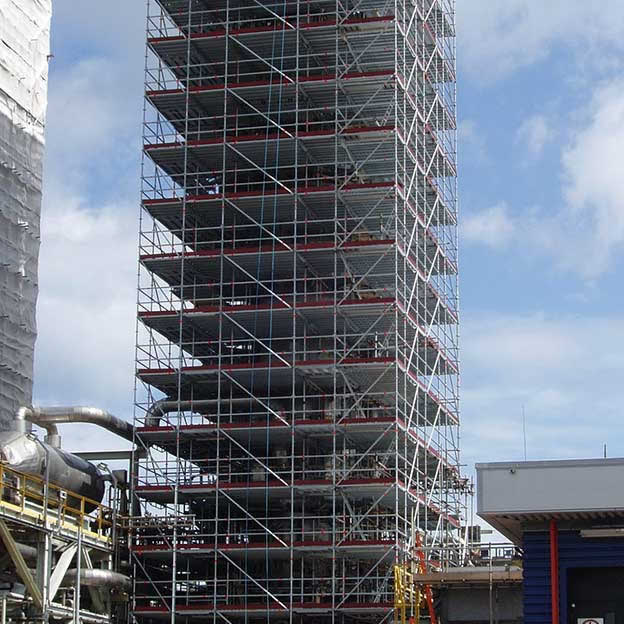Within the constantly changing landscape of commercial construction, scaffolding serves as a critical backbone that ensures projects run efficiently, securely, and effectively. As structures rise higher and the intricacy of builds grows, the importance of robust and flexible scaffolding systems cannot be overemphasized. Related Site is more than just a temporary framework; it plays a crucial role in facilitating various construction tasks, from enabling workers to access elevated areas to supporting the tools and materials necessary for successful project completion.
Understanding what commercial scaffolding entails and why it is essential for contemporary construction practices is the first step towards appreciating its effect on job site safety and efficiency. This article will explore the different types of scaffolding used in commercial projects, emphasize the key safety measures and compliance regulations that must be adhered to, and provide insights into how to choose the right scaffolding solutions customized to specific requirements. Whether it's renovating office spaces, constructing high-rise buildings, or outfitting stadiums, the scaffold connection is crucial in joining forces for successful commercial projects.

Understanding Business Scaffold Structures
Commercial scaffolding is a short-term structure employed to support workers and supplies during the construction, maintenance, or repair of retail buildings. It plays a crucial role in making sure that projects can be completed securely and effectively, allowing access to lofty or difficult-to-access areas. Without appropriate scaffolding, jobs that entail extensive work at heights would be considerably more hazardous and difficult, emphasizing the necessity of this crucial equipment in the building industry.
There are numerous types of scaffolding utilized in commercial projects, including framework scaffolding, modular scaffolding, and tube and clamp scaffolding. Each type has its unique particular advantages and is chosen based on the unique requirements of the job. For instance, configured scaffolding is often favored for its quick installation and versatility to diverse building layouts, making it a frequently chosen choice for many commercial operations.
Protection is a top concern on any worksite, and commercial scaffolding is designed with this in mind. Standards, such as those established by OSHA, enforce strict safety standards that scaffold systems must satisfy to safeguard staff from falls and other dangers. Routine safety inspections, compliance with safety protocols, and proper training for crews operating scaffolding are essential to provide a safe working environment, ultimately boosting productivity while minimizing the chance of accidents on retail construction sites.
Safety and Conformity in Scaffolding
Maintaining security and adherence in scaffold construction is crucial for the health of employees and the effective completion of commercial projects. The Occupational Safety and Health Administration provides rigorous regulations governing scaffold construction practices to deter accidents and injuries. These regulations demand that all scaffolding systems be properly designed, constructed, and maintained, highlighting the need for qualified personnel who grasp the requirements and hazards associated with elevated work.
Regular inspections and maintenance are integral to upholding safety criteria on job sites. A thorough scaffolding safety inspection entails checking load limits, stability, and the structural integrity of the equipment. This should be conducted before each use, as well as regularly throughout the duration of the project. Proper logging of inspections can also assist confirm adherence with OSHA standards and provide a important record in the occurrence of incidents.
Investing in scaffolding training for your crew is important for fostering a safety-first culture on the worksite. Training should cover the basics of scaffolding safety, including recognizing common hazards, correct usage protocols, and the significance of PPE. By equipping workers with the necessary skills and knowledge, companies can significantly reduce accident rates while also ensuring adherence to compliance standards in the building industry.
Opting for the Right Scaffolding Options
Selecting the right scaffolding solution for any commercial project is essential for promoting effectiveness and protection. Consider your specific requirements of the construction, such as height, load capacity, and the various tasks required. Various scaffolding systems, like modular, tube and clamp, and system scaffolding, offer diverse advantages according to the scope of work. Evaluate the accessibility of the site and how the scaffolding will integrate with related activities to boost output and minimize disruptions.
It's essential to examine the components used in scaffolding systems. Aluminum systems, for instance, are lightweight and quick to erect, which makes it a popular choice for commercial jobs requiring mobility and fast setup times. Alternatively, weightier choices like steel scaffolding offer greater load-bearing capacity, which may be necessary for more demanding applications. Verify that the chosen scaffolding equipment complies with all relevant safety standards and regulations to safeguard workers and comply with legal requirements.
Lastly, working with a specialist scaffolding company can provide valuable insights into the optimal solutions for your project. Experienced providers can assess your needs, suggest the most suitable scaffolding types, and aid in logistics and setup. By drawing on their knowledge, you can steer clear of frequent mistakes and ensure that your scaffolding installation enhances the overall success of your commercial project.
